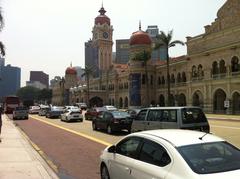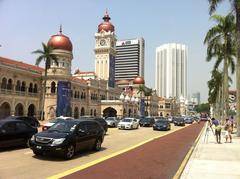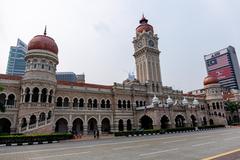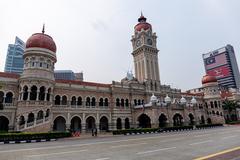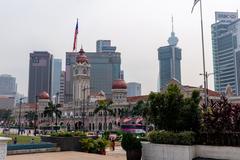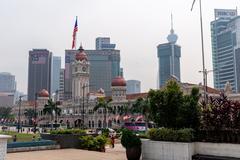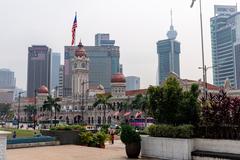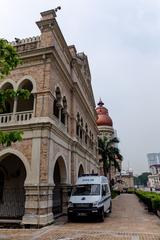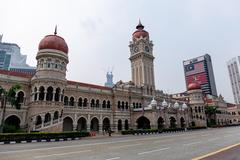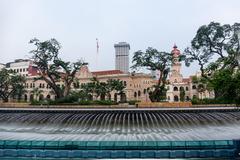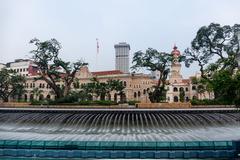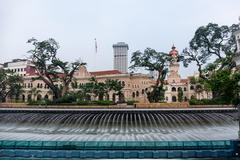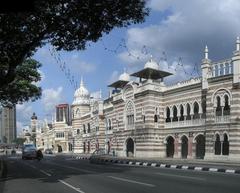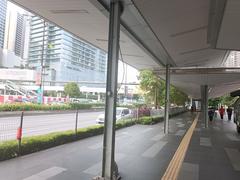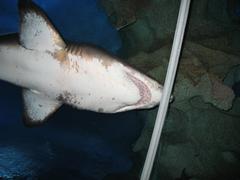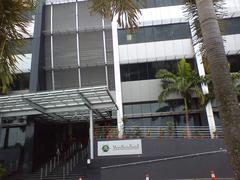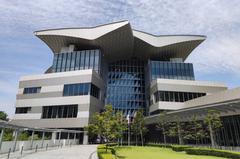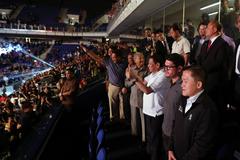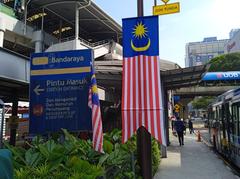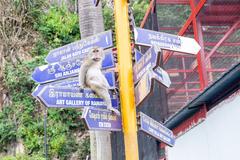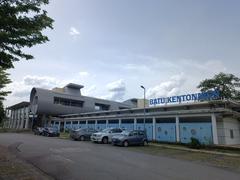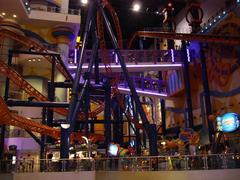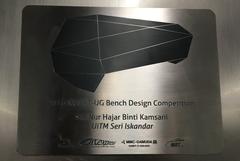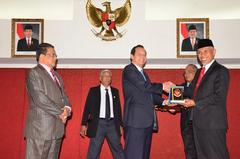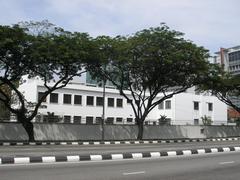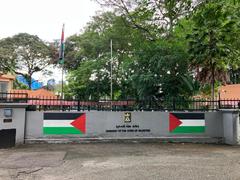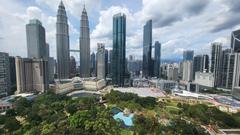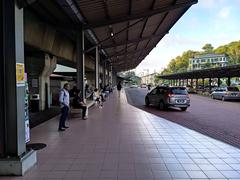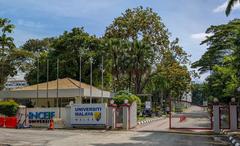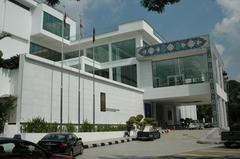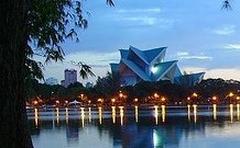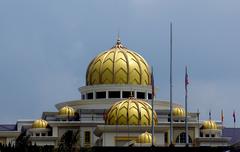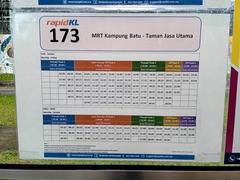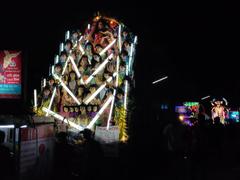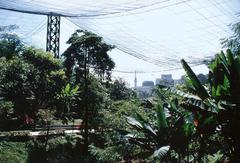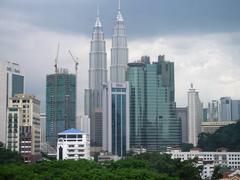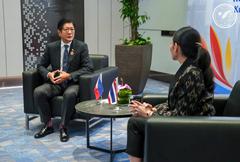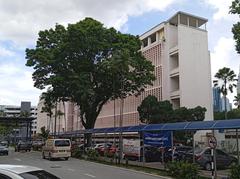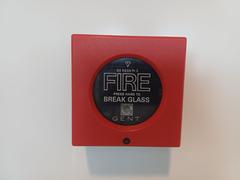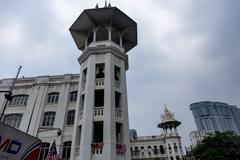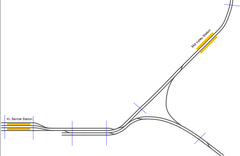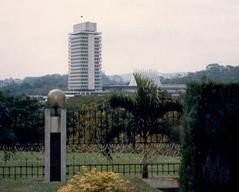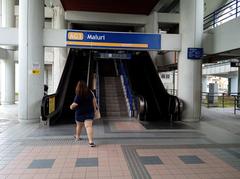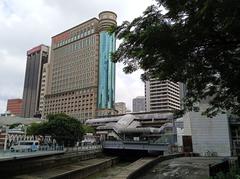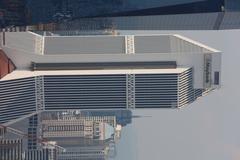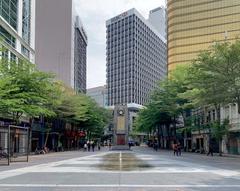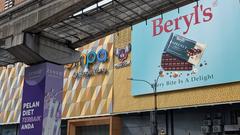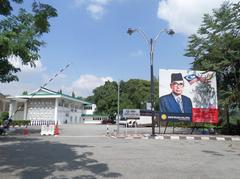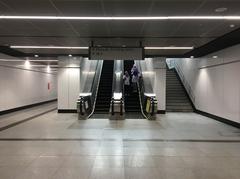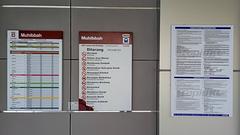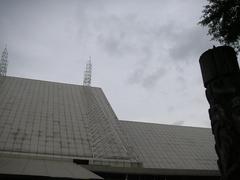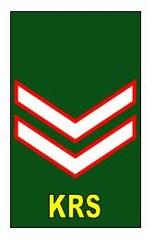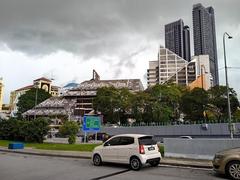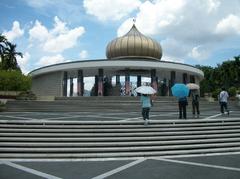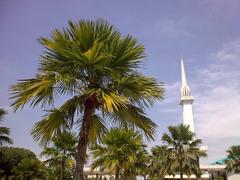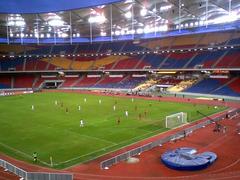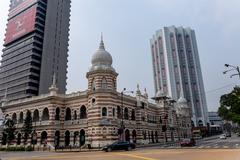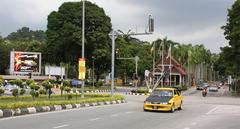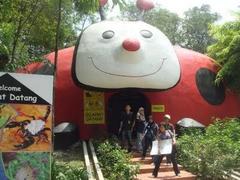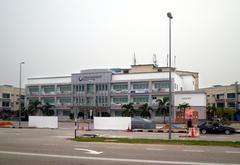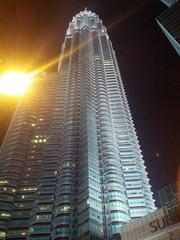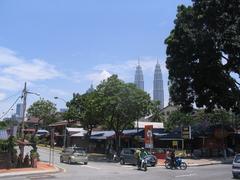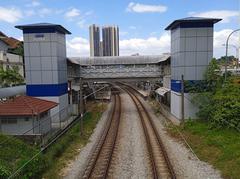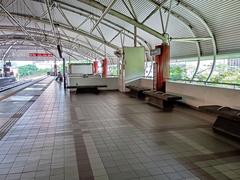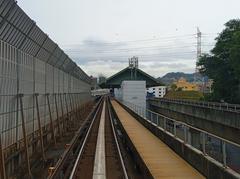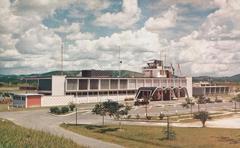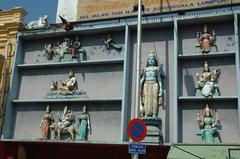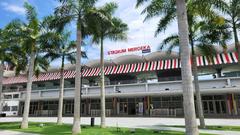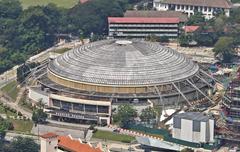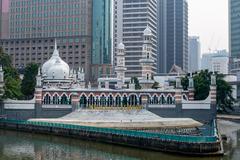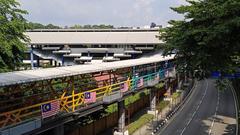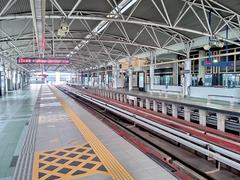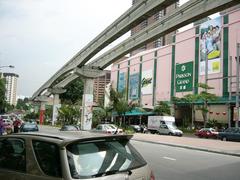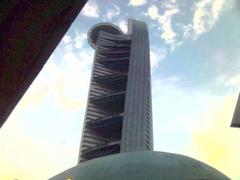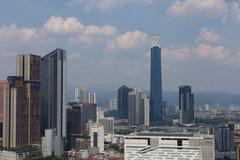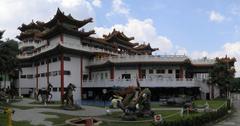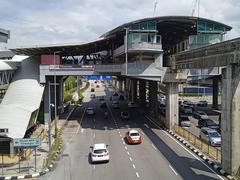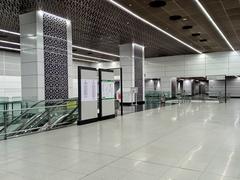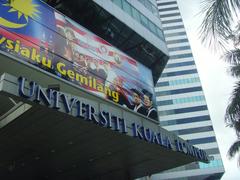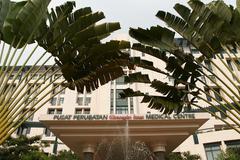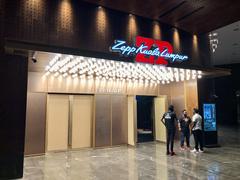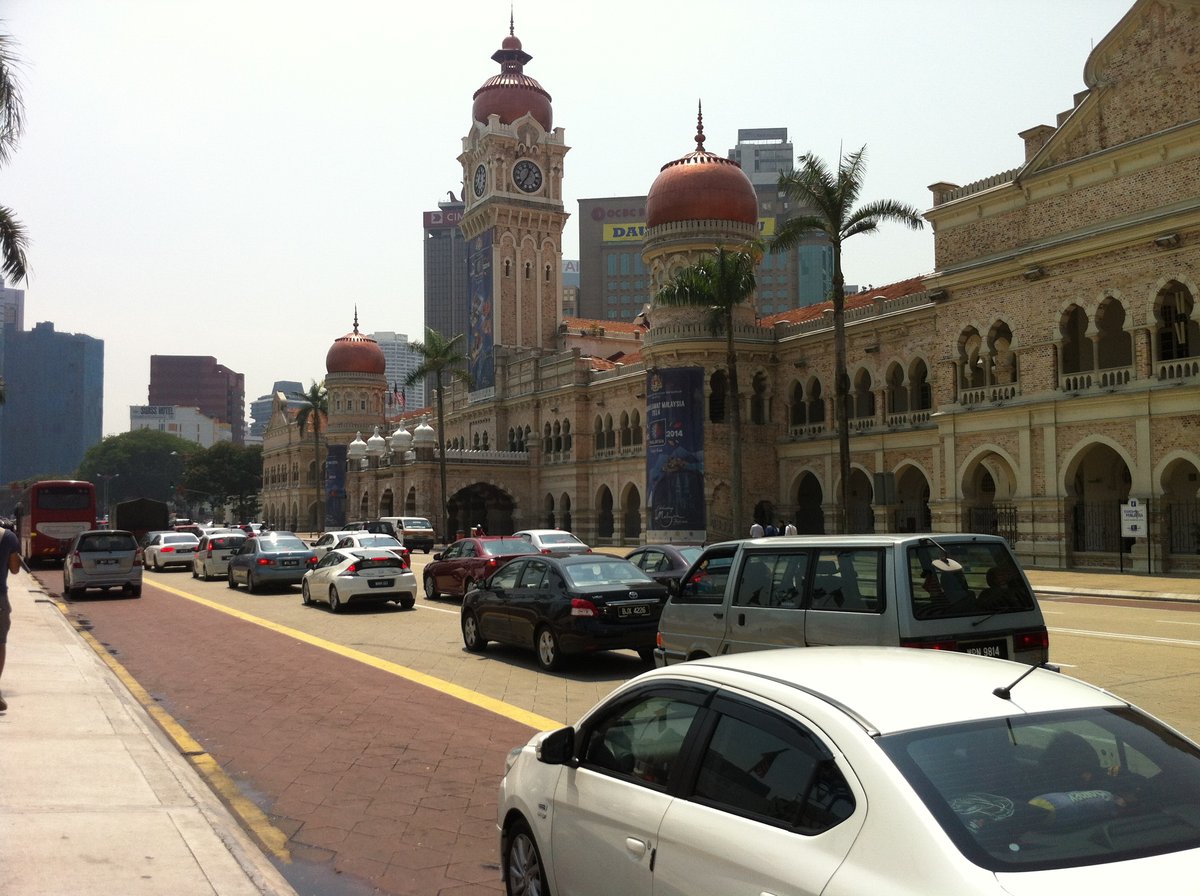
Comprehensive Guide to Visiting Sultan Abdul Samad Mosque, Kuala Lumpur, Malaysia
Date: 18/07/2024
Introduction
The Sultan Abdul Samad Mosque, also known as Masjid Jamek Sultan Abdul Samad, is a significant cultural and historical landmark in Kuala Lumpur, Malaysia. Constructed between 1907 and 1909, it offers a unique glimpse into the architectural, cultural, and social evolution of Kuala Lumpur. Designed by British architect Arthur Benison Hubback, the mosque features elements of Moorish, Indo-Saracenic, and Mughal architectural styles, reflecting Malaysia’s rich colonial past and its journey towards modernity (Visit Selangor, Malaysia Traveller).
The mosque has played a pivotal role in Malaysia’s history, serving as a focal point for political and social movements during the early 20th century, particularly in the context of the country’s struggle for independence. Located at the confluence of the Klang and Gombak rivers, it was an ideal gathering spot for public rallies and speeches by independence leaders. Today, it remains a center for religious and social activities, undergoing several renovations to preserve its historical integrity and accommodate the growing number of worshippers (The Star).
Table of Contents
- Historical Background of Sultan Abdul Samad Mosque
- Cultural and Religious Significance
- Visitor Information
- Visitor Experience
- Conclusion
- Frequently Asked Questions (FAQ)
Historical Background of Sultan Abdul Samad Mosque
Early Conception and Construction
Commissioned by the British colonial administration, the Sultan Abdul Samad Mosque was designed by Arthur Benison Hubback, a British architect renowned for his work in Malaysia. The construction began in 1907 and was completed in 1909, making it one of the earliest examples of Mughal architecture in the region (Visit Selangor).
Architectural Significance
The mosque’s design is a blend of Moorish, Indo-Saracenic, and Mughal architectural styles. It features three domes, the largest of which is 21.3 meters high, and two minarets standing at 26.8 meters. The use of red bricks and white marble creates a striking visual contrast, making the mosque a prominent landmark in Kuala Lumpur. The layout includes a central prayer hall, an ablution pool, and a courtyard, designed to accommodate a large number of worshippers (Malaysia Traveller).
Role in Malaysian Independence
The mosque served as a gathering point for various political and social movements during the early 20th century. It was a venue for several important speeches and rallies organized by leaders of the independence movement, owing to its strategic location at the confluence of the Klang and Gombak rivers (The Star).
Post-Independence Era
After Malaysia gained independence in 1957, the mosque continued to play a vital role in the community. It became a center for religious activities, social gatherings, and educational programs. The mosque underwent several renovations and expansions to accommodate the growing number of worshippers. In 1965, it was officially renamed Masjid Jamek Sultan Abdul Samad in honor of Sultan Abdul Samad (Malaysia Traveller).
Preservation and Modernization
In recent years, the mosque has undergone extensive restoration work to preserve its historical and architectural integrity. The restoration projects have focused on maintaining the original design elements while incorporating modern amenities to enhance the visitor experience, supported by both the Malaysian government and various non-governmental organizations (Visit Selangor).
Cultural and Religious Significance
The Sultan Abdul Samad Mosque is not just a place of worship; it is a cultural and historical landmark that embodies the rich heritage of Kuala Lumpur. It hosts various religious events, including daily prayers, Friday sermons, and special prayers during Ramadan and Eid. Additionally, it serves as a venue for interfaith dialogues, cultural exhibitions, and educational programs aimed at promoting understanding and harmony among different communities (The Star).
Visitor Information
Visiting Hours and Tickets
The mosque is open to visitors from 8:30 AM to 12:30 PM and from 2:30 PM to 4:30 PM daily, except during prayer times. There is no entrance fee, but donations are welcome. Guided tours are available and provide valuable insights into the mosque’s history, architecture, and cultural significance. Visitors are encouraged to check the mosque’s official website for the most up-to-date information regarding visiting hours and special events.
Travel Tips and Nearby Attractions
When planning your visit, it is advisable to dress modestly as a sign of respect. Women are required to cover their heads, and robes are available at the entrance for those who need them. The mosque is conveniently located near other historical sites in Kuala Lumpur, such as Merdeka Square and the Sultan Abdul Samad Building, making it easy to include in a broader city tour. Public transportation options, including the LRT, are readily available, making the mosque accessible from various parts of the city.
Visitor Experience
Accessibility and Facilities
The mosque is easily accessible by public transportation, with several bus and train routes serving the area. It is located near the Masjid Jamek LRT station, making it convenient for visitors. The mosque is equipped with state-of-the-art facilities, including air conditioning, advanced sound systems, and improved accessibility features for people with disabilities.
Dress Code and Etiquette
Visitors are required to adhere to a modest dress code, covering their arms and legs. Women must wear a headscarf, which can be borrowed from the mosque if needed. Shoes must be removed before entering the prayer hall, and visitors are asked to maintain a respectful demeanor while on the mosque grounds.
Guided Tours and Educational Programs
The mosque offers guided tours that provide insights into its history, architecture, and cultural significance. The tours are led by knowledgeable guides who can answer questions and offer in-depth information. Educational programs and workshops on Islamic culture and traditions are also available, making the mosque a valuable resource for students, researchers, and tourists.
Photography and Souvenirs
Photography is allowed in certain areas of the mosque, but visitors are asked to be respectful and avoid taking photos during prayer times. A small gift shop offers souvenirs, including books, postcards, and traditional Islamic artifacts. Proceeds from the gift shop support the mosque’s maintenance and community programs.
Conclusion
The Sultan Abdul Samad Mosque stands as a testament to Kuala Lumpur’s rich history and cultural diversity. Its architectural grandeur, historical significance, and role in fostering community spirit make it a cherished landmark in Malaysia. Whether you are a history enthusiast, an architecture aficionado, or a curious traveler, a visit to this iconic mosque promises a memorable and enriching experience (Visit Selangor, Malaysia Traveller).
For more information and updates, visitors are encouraged to check the mosque’s official website and follow related social media channels.
Frequently Asked Questions (FAQ)
Q: What are the visiting hours for non-Muslims at the Sultan Abdul Samad Mosque? A: The visiting hours for non-Muslims are from 9:00 AM to 12:30 PM and from 2:30 PM to 4:00 PM on weekdays. The mosque is closed to non-Muslim visitors on Fridays and during prayer times.
Q: Is there an entrance fee to visit the Sultan Abdul Samad Mosque? A: No, there is no entrance fee to visit the mosque.
Q: What should I wear when visiting the mosque? A: Visitors are required to dress modestly, covering their arms and legs. Women are also required to wear a headscarf, which can be borrowed from the mosque if needed.
Q: Are guided tours available at the mosque? A: Yes, guided tours are available and can enhance your visit by providing in-depth information about the mosque.
Q: Can I take photographs inside the mosque? A: Photography is allowed in certain areas of the mosque, but visitors are asked to be respectful and avoid taking photos during prayer times.
Q: Are there any nearby attractions to visit along with the mosque? A: Yes, nearby attractions include Merdeka Square, the Kuala Lumpur City Gallery, and the Central Market.
References
- Visiting Sultan Abdul Samad Mosque - History, Tickets, and Travel Tips, 2024, Visit Selangor https://www.visitselangor.com/masjid-jamek-sultan-abdul-samad/
- Visiting the Sultan Abdul Samad Mosque - History, Tickets, and Tips, 2024, Malaysia Traveller https://www.malaysia-traveller.com/masjid-jamek.html
- Essential Visitor Tips for Sultan Abdul Samad Mosque in Kuala Lumpur - Hours, Tickets, and More, 2024, The Star https://www.thestar.com.my/news/nation/2017/08/31/masjid-jamek-a-symbol-of-unity/
